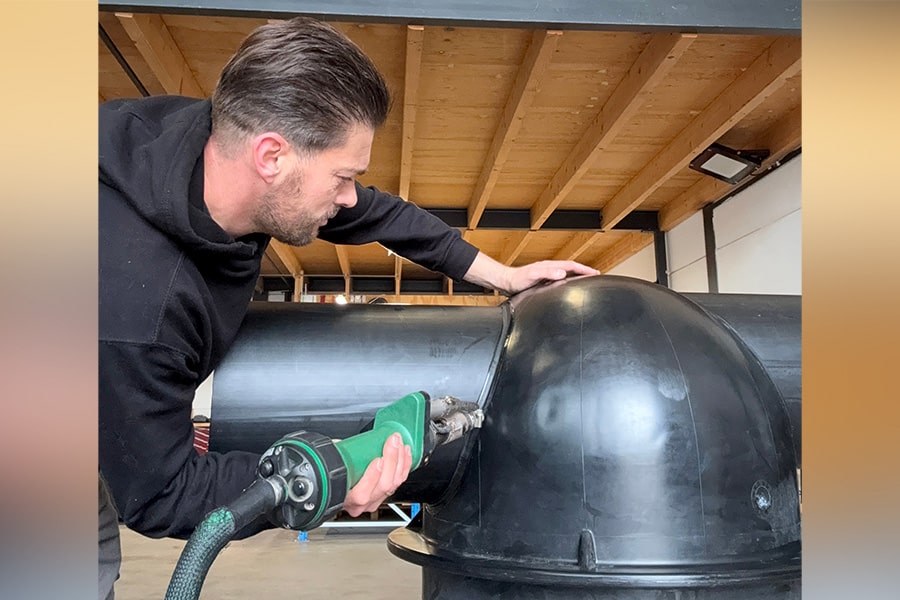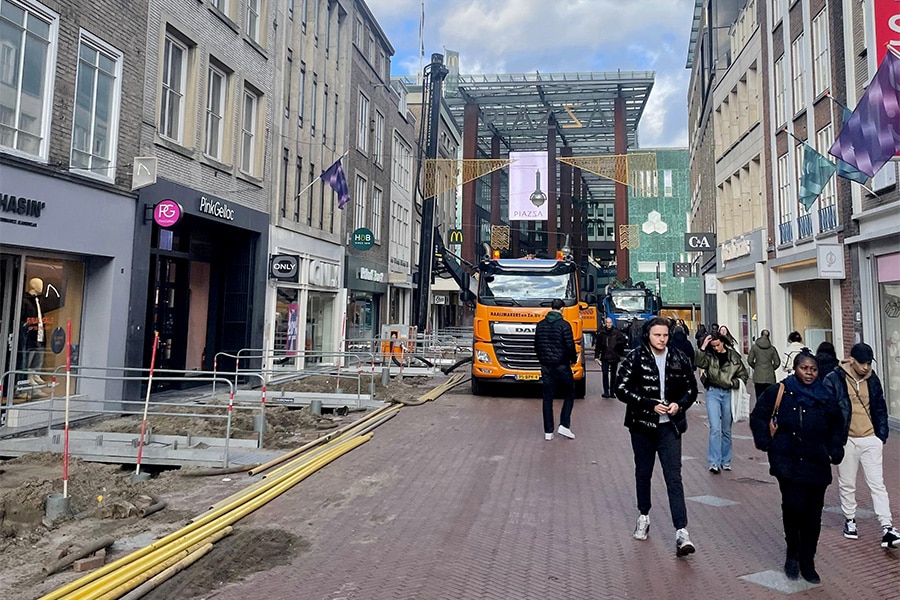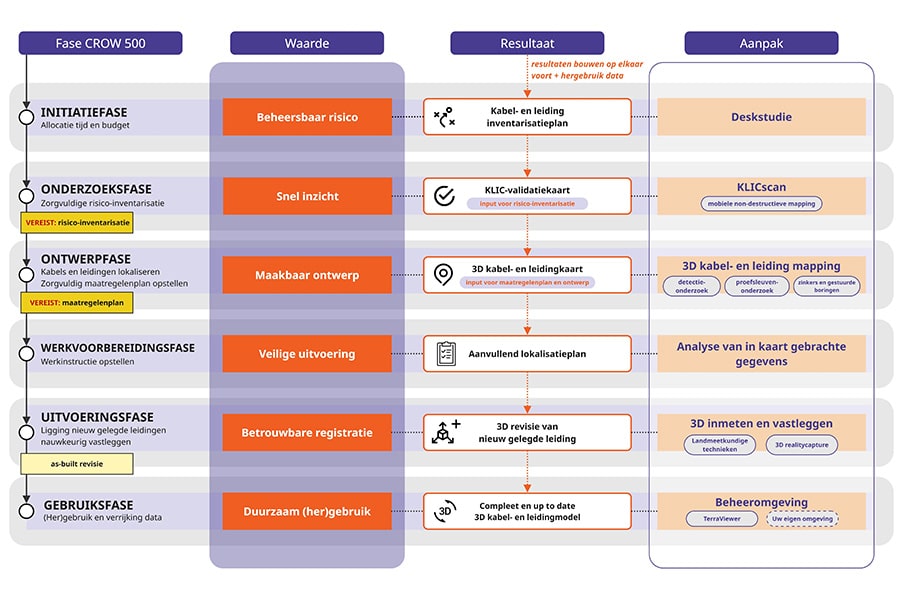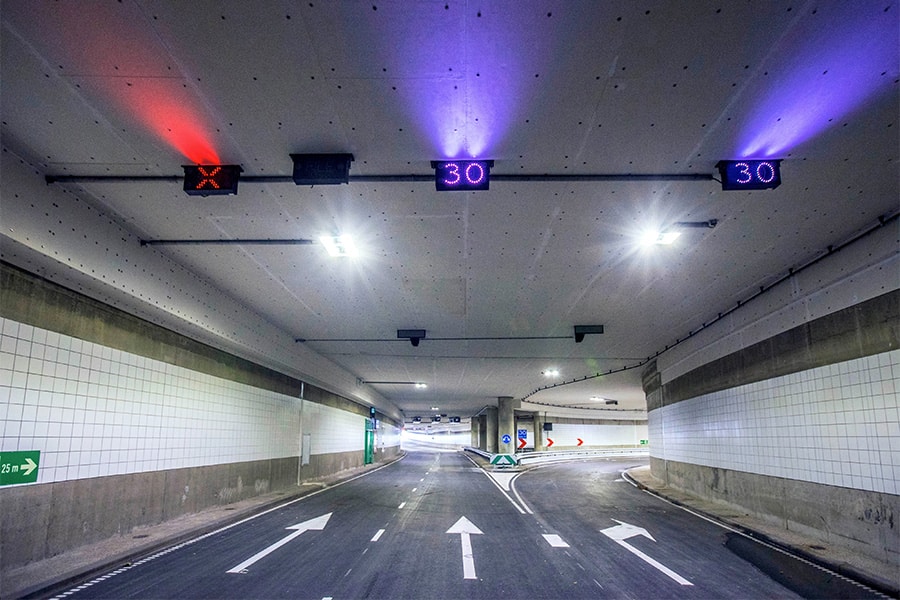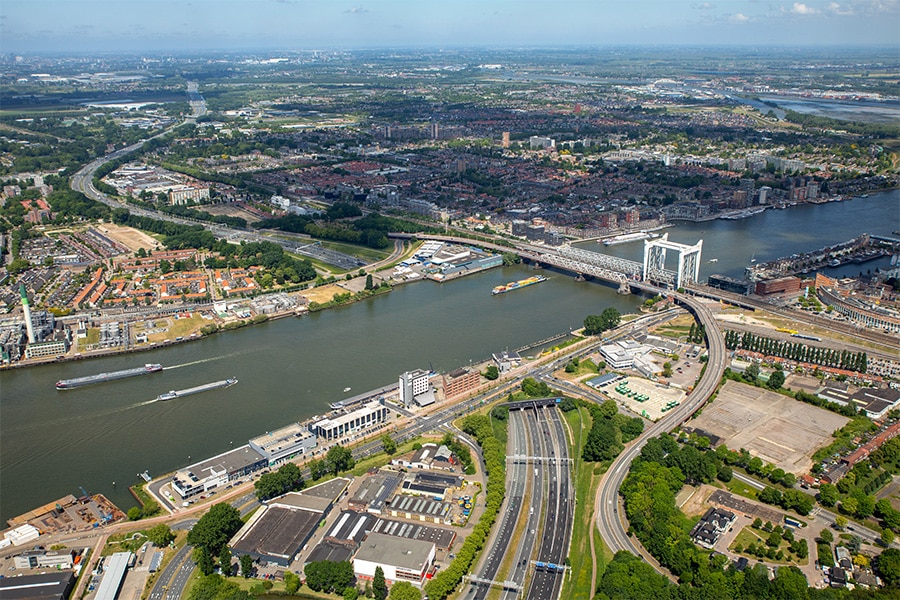
Portfolio approach in nine years to future-proof five South Holland state tunnels
Most tunnels in South Holland were built at the end of the previous and beginning of this century. Due to aging and intensive use, they need to be renovated so that they remain safe and available in the future. Within the South Holland Tunnel Renovations Project (PTZ), Rijkswaterstaat is deliberately opting for a portfolio approach; a bundled approach in which five tunnel renovations will be carried out until 2032. In this way we can accelerate the complex task at hand and work more effectively with the market, sharing and retaining knowledge. Tunnel Engineering Consultants (TEC), a combination since 1988 of Haskoning and Witteveen+Bos, has been contracted for the engineering services.
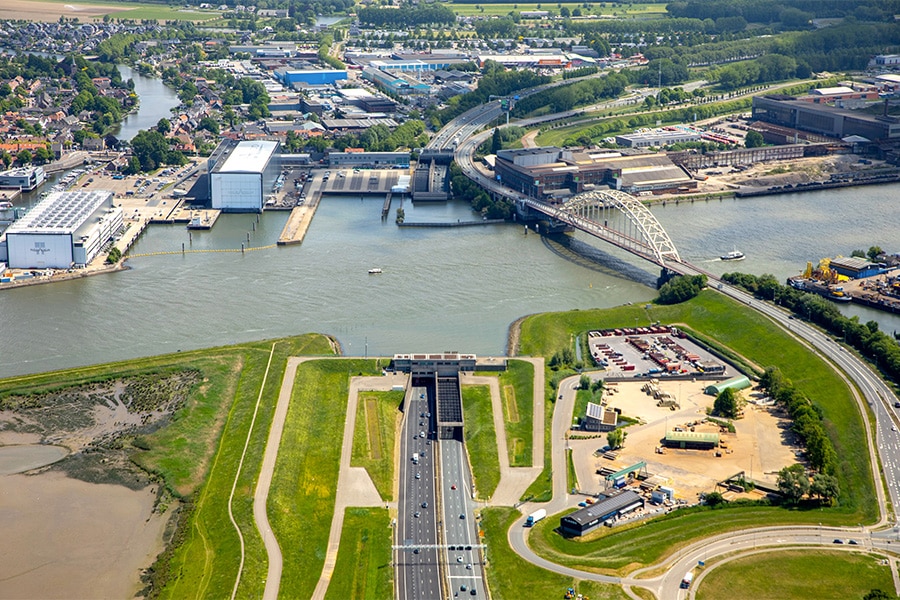
Portfolio Approach
Within the PTZ project, the Northern Tunnel (A15), the Beneluxtunnel (A4), the Second Heinenoordtunnel (A29) (portfolio 1), the Drechttunnel (A16) and the Sijtwendetunnel (N14) (portfolio 2) are being addressed. "Given the task at hand, it is important for Rijkswaterstaat to increase production. By bundling five tunnels in this way, we can carry out more work in parallel than if we were tackling one tunnel at a time," says Rik Sonneveldt, project manager for Rijkswaterstaat at PTZ. "This way we can renovate five tunnels in a nine-year period. That means we're going a lot faster than in the traditional approach, and we're achieving that mainly through efficient preparation. For that reason, we entered into one long-term nine-year contract with engineering firm TEC. That contract was awarded at the end of 2022."
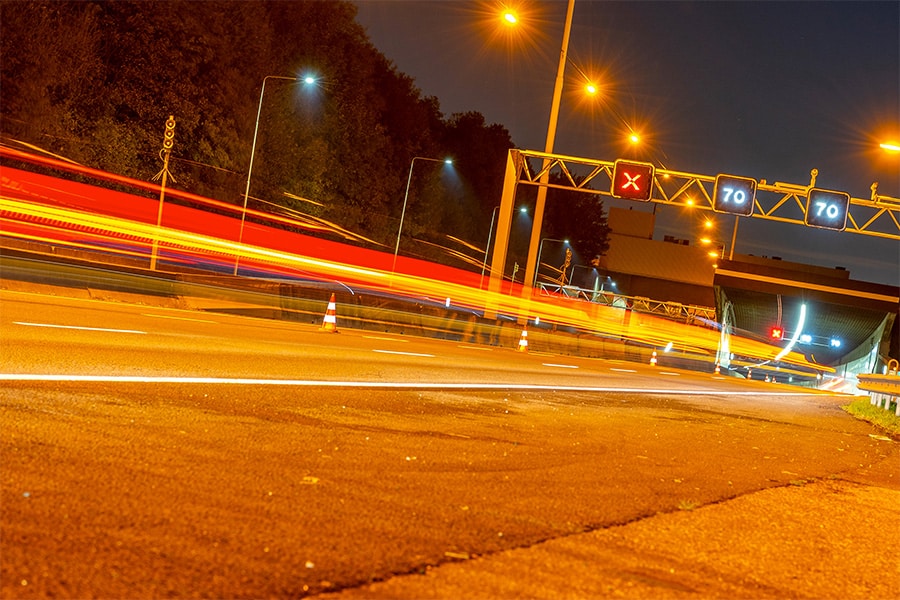
Flying start
The people of TEC and Rijkswaterstaat are working together as one team in the preparation, tendering and realization of the tunnel renovations. "In the initial phase, we invested a lot in getting to know each other and thus got off to a flying start," says Johan Kornet, TEC project manager at PTZ. "On the 'shop floor' you no longer see who belongs to TEC and who belongs to Rijkswaterstaat." Besides the flying start in the cooperation, you can already see the efficiency in the contract preparation and tendering of the tunnels. Kornet: "Normally one tunnel takes seven years, now we have tackled three tunnels in 2.5 years in a roof tile fashion. This means that the tunnels are both sequential and partly parallel in planning. In addition to the tunnel-specific work, it also includes the necessary repetitive work, and this is how we keep all the knowledge on board. Preparing the second tunnel is then a lot more efficient than the first and subsequent tunnels because of the routine that develops. To date, we have met all the milestones."
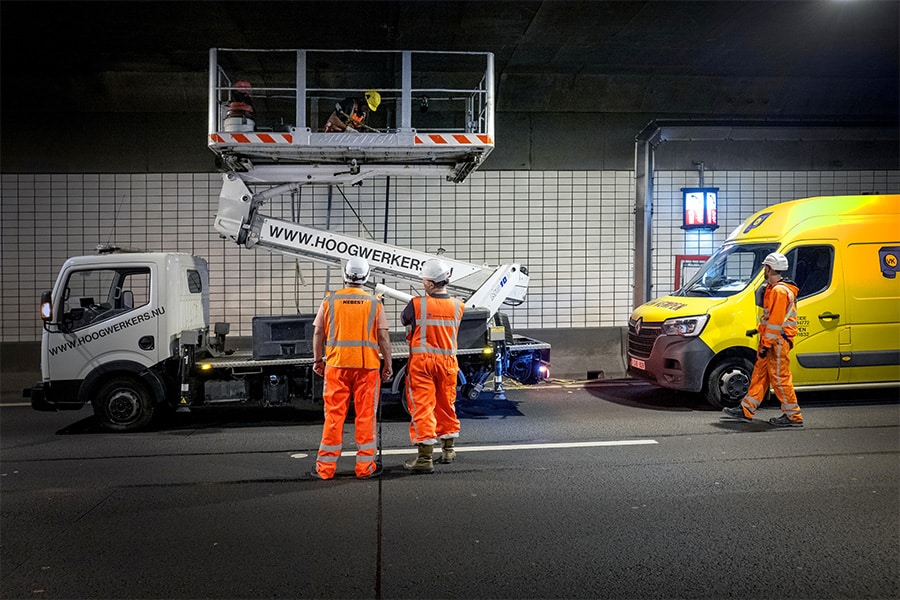
Learning & Development
Project PTZ is divided into two contract portfolios. "That means we only have to go through two tenders for the five tunnels," Sonneveldt clarifies. "The idea is that the contractor, after a negotiation process, will also do the follow-up contract. That way we save procurement costs, the contractor has the desired deal flow ánd we learn together from previous experiences." Learning & Development is one of the project objectives within PTZ anyway. "The idea behind it is that we gather all the knowledge to do the repeat assignment better, smarter, faster and with fewer hands," says Ashna Bainathsah, manager of project management at Rijkswaterstaat. "TEC has explicitly set up a lead role for this, which is filled by Arlette Nieswaag as Manager of Learning and Development. So within PTZ we are dedicated to promoting learning and development."
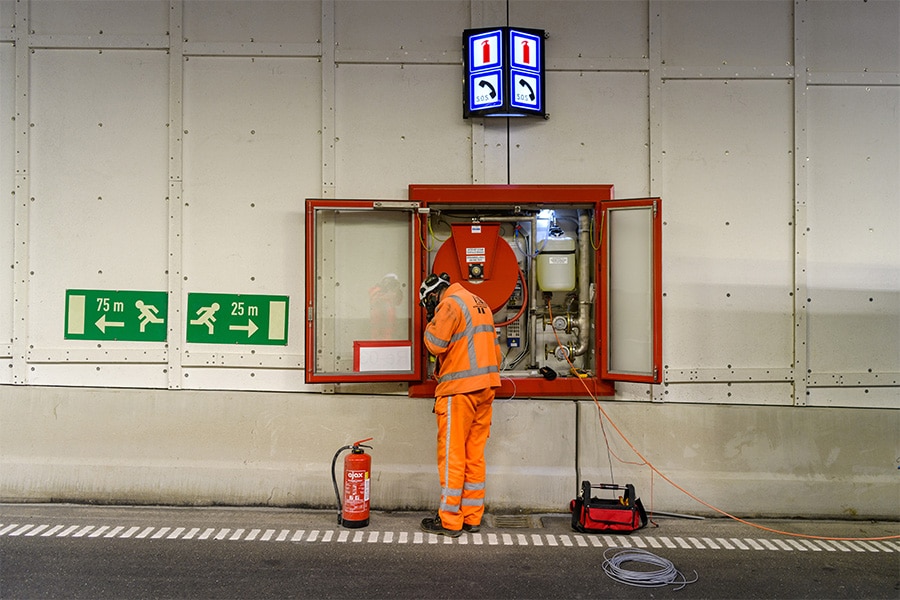
Center for Underground Construction (COB).
Among other things, Team Learning & Development organizes online theme sessions once a month that are open to the entire project team. "Colleagues then zoom in on a specific topic they are working on," says Nieswaag. "Furthermore, we organize knowledge-sharing sessions together with the CDE. These are live meetings in which we encourage interaction between PTZ and the market. Particularly to share knowledge, but also to prevent us from becoming our own island in the tunnel world." Bainathsah adds: "We very consciously take the stage at times as project PTZ by spreading our wings outside the project as well and taking the knowledge we have developed further. Also, our colleagues are regularly actively approached to share their experiences with project teams on other projects." It is extraordinary to see how Learning & Development is embraced within PTZ, notes Nieswaag. "It is part of the project culture."
Smart and efficient
At PTZ, they are bringing the five tunnels up to the level of the National Tunnel Standard. "We are following two main tracks in terms of technology: replacing the tunnel technical installations and upgrading the civil construction so that we don't have to worry about it for the next 30 years," says Willem Hijmans, technical manager of portfolio 1 at Rijkswaterstaat. "If you reason only from the point of view of efficient design and construction, you would prefer to shut down the tunnel for months at a time. You then take out the old installations first and then put the new ones back in. But we deliberately choose not to do that, partly because of the impact on the already busy road network. Above all, we want to do it smartly and efficiently. And we do that by closing the tunnel for a shorter period, during which the civil works are carried out on the one hand and the new installations are installed on the other hand. ′
Then we reopen the tunnel and continue to build the installations and systems, leaving the tunnel open to traffic and the existing installations still in operation. Once all the new installations and systems have been tested and validated, the tunnel will be closed for a second time for a short period and we will transfer everything to the new system."
Sustainable maintenance
The tunnels were built at a time when there was no National Tunnel Standard. "We are going to upgrade the tunnels to new construction level as much as possible," says Mario Mies, senior structural engineer at TEC. "At those points where that is really not possible, we still try to approach the target level as closely as possible and record why we deviate from the standard. We also make improvements to make the tunnel more maintainable with less traffic disruption. A good example is the service hubs. Service hubs are cabinets that are placed every 50 or 100 meters in the tunnel and act as a kind of "intermediate stations. These intermediate stations connect all installations to the main network and thus supply them with energy. As a result, we need far fewer cables, which improves maintainability. We are also going to place fans more intelligently: powerful fans outside the tunnel instead of above the traffic in the tunnel. This will prevent damage to the fans by high trucks. Also, the system, which helps the operator to intervene quickly if there is an accident in the tunnel, will be improved with intelligent cameras and there will be a separate system for rainwater drainage."
Multidisciplinary project
The beauty of PTZ, according to Mario Mies, is that it is truly a multidisciplinary project. "We work with large teams and lots of specialists who each speak their own language. The technical complexity and integrality is quite a challenge and that makes it genuinely interesting. Renovating a tunnel is much more complex than new construction." And such a complex renovation obviously also affects the environment and traffic flow, which is already under great pressure because of the biggest renovation task to our infrastructure ever. "Traffic engineering models do not show a pretty picture when tunnels or tunnel tubes are closed," says Kim Stelleman, environment manager for the Department of Public Works at PTZ. "Early in the project, we look at where we can reduce traffic disruption by comparing different implementation variants side by side. We ask the contractor if it can be done even smarter. In the run-up to and during construction, we communicate clearly about the expected disruption and advise people about possible alternatives. Stakeholders in the area such as surrounding municipalities, logistics companies, public transport companies and the health care sector are involved in thinking up these alternatives. It will be quite a puzzle. The impact is big and that requires the environment to be involved in keeping the region somewhat accessible during the tunnel renovations."
Balancing act
PTZ also very emphatically involves expertise from the market in limiting environmental nuisance. "Most of the implementation experience lies with the contractors," acknowledges Robin Gerrets, technical manager of portfolio 2. "We really want to use that knowledge. We don't have the luxury of closing a tunnel for an extended period of time. That would make the work much more efficient and economical. We challenged candidates in the tender to see if they could do it smarter or faster, and to see if they could do some of the work in the often quieter summer period. On the other hand, the contractor's execution team already cannot take their own families on vacation. That may sound like a small thing, but when your employer asks this of you every summer, it really becomes a thing. So it's going to be a nice balancing act."
In the 2.5 years that project PTZ has been underway, there have already been successes in terms of content and cooperation. "In the first tender, we received compliments from the contractor about the way we have our files in order," Sonneveldt summarizes. "The biggest risk is that you encounter unforeseen issues 'behind the wallpaper.' You want to prevent that by doing good preliminary research. In this we have really taken a step forward. So our ambition is that when all the tunnels are completed by the end of 2032, no more major renovations will be needed on these tunnels. And that through a smarter and modular design of the tunnel technical installations, they will be much easier to maintain and with less disruption. PTZ is therefore a blueprint for other tunnels within the Department of Public Works to be considered for renovation."
